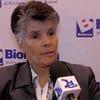Check out what is new in Poultry Industry
Find the best technical articles, forums, and videos on Poultry Industry at Engormix. Enter now and interact with the world's largest agricultural social network.
Heat Stress in Laying Hens Heat stress is one of the primary concerns for laying hen production in the summer as heat waves may significantly increase flock mortality and reduce egg production in hen houses. The use of mechanical ventilation and cooling cells are popular cooling methods used in the southern US, including Georgia. However, most of the layer farms in the US Midwest (where over 50% of US table eggs are produced) do not have evaporative cooling systems due primarily...
Comments : 0
Recommendations: 0
INTRODUCTION For feed chain stakeholders in an increasingly competitive marketplace, the bottom line can rise or fall with the contaminant levels in grain and other raw materials. The repercussions of feedstuffs that fail to meet the highest safety and quality standards can spread across the entire value chain, jeopardizing livestock health and the reputation and economic performance of multiple businesses and entire growing regions. Ultimately, toxic contaminants that slip...
Comments : 1
Recommendations: 3


Feed Conversion Ratio: Unveiling the Secrets of Sustainable Livestock Production
Suggested link
INTRODUCTION As we learn more about the negative impacts of calcium (Ca) on the availability of phosphorus (P), it highlights how little we know about Ca requirements, digestibility of Ca in ingredients, and their impact on P digestibility (Angel, 2019). These impacts can be direct or indirect through chelation with phytate, which can have a profound impact on the efficacy of phytase. Historically the ratio of Ca to P has been defined as total Ca to total P or total Ca to a form...
Comments : 0
Recommendations: 4
Foodborne diseases & global scenario: Up to 30% of the inhabitants in developed countries may be affected by food-borne illness each year and the problems are likely to be even more serious in developing countries. The global occurrence of food-borne disease is difficult to evaluate, but in 2005 it was projected that 22 lakhs people, including 18 lakhs children, died from diarrheal diseases(WHO,2015). Microbiological hazards represent 93% of the incidents of food-borne...
Comments : 0
Recommendations: 0


Overview of Performance of Listed Vitamin Companies in 2023
Suggested link
A sneaky microorganism capable of creating nightmares to the poultry industry is here to stay but is it really taking over? It is amazing to see how many available options are in the market for Salmonella control. During the last IPPE Expo, I had an opportunity to chat with various nutritional and biological products suppliers and learn from them how an integrated control strategy is required for Salmonella control in poultry. Selecting the right products is only part of it; monitoring...
Comments : 3
Recommendations: 1
Respiratory problems are considered one of the most important challenges in poultry farming, with a significant economic and productive impact, not just because of their high morbidity and mortality, but also because of the decrease production and higher seized materials in the slaughterhouse they cause. Furthermore, main reasons for the use of antimicrobials in aviculture are related to respiratory and digestive diseases. ...
Comments : 4
Recommendations: 8
Maven of diversified fields including Steve Jobs believes in Quality rather than quantity. In Poultry, quality egg even if less quantity can conquer more profit than the poor quality (cracked, soiled, smelled, less weight, misshapen, etc) but more in quantity eggs. Summer is the...
Comments : 1
Recommendations: 3
Bacterial chondronecrosis with osteomyelitis (BCO) is an infective leg condition that results in lameness, affecting meat chickens internationally. BCO can be induced using mechanical challenges such as wire ramps (Wideman 2016). Based on a study wherein perches had a negative impact on bird latency to lie (LTL) at 42 days (d) old (Phibbs et al. 2020) perches may be a mechanical challenge to birds also, reducing their leg health in a similar way to Wideman’s ramps. This study compared...
Comments : 0
Recommendations: 0


Rethinking Amino Acid Nutrition of Black Soldier Fly Larvae (Hermetia illucens) Based on Insights from an Amino Acid Reduction Trial
Suggested link
It is widely accepted that the absence of suffering no longer defines animal welfare and that positive affective experiences are important (Mellor 2015). However, there are few valid and reliable tools available to comprehensively...
Comments : 0
Recommendations: 0
I. INTRODUCTION Heavily driven by public perception and large supermarket monopolies, welfare is of major concern for the poultry industry. The past few decades have seen development of poultry practices with a heavy focus on the welfare of poultry. There have been huge changes implemented to accommodate improvements in welfare, particularly in the layer industry. There are now a number of production systems...
Comments : 0
Recommendations: 1
Free-range layer pullets are typically reared indoors within Australia, but adult layers go outdoors which might cause poorer adaptation due to the mismatch between rearing and laying environments. Indoor enrichments may optimise physical development of pullets and subsequent welfare as adult free-range hens (Campbell et al., 2019). In the outdoor environment, hens may have greater opportunities for exercise and natural behaviours which might contribute to improved physical health and...
Comments : 0
Recommendations: 0
I. INTRODUCTION Maintaining vegetation on free range farms with fixed ranges is a significant issue (Singh et al., 2017). Nonetheless, free range accreditation programs stipulate palatable vegetation to be available on the range at all times (RSPCA 2015). This is more problematic to achieve during dry seasonal conditions and drought, which are common features of the Australian climate. ...
Comments : 0
Recommendations: 0
Free-range layer systems are increasing globally but range use can be low, particularly when birds are first provided outdoor access. It is recommended to match the rearing system with the layer system for optimal bird welfare (Janczak and Riber, 2015). However, within Australia, pullets destined for free-range systems are typically reared indoors which may hinder their adaptability to the outdoor environment as adults. Rearing enrichments may optimise behavioural development and better...
Comments : 0
Recommendations: 0
1. INTRODUCTION Consumer demands and the pressure of supermarket chains are changing rapidly the way eggs are produced. Enriched cages are not considered a sound alternative to improve animal welfare standards in the developed countries. Consequently, the industry is moving hens from battery cages towards alternative systems, such as deep litter and aviary barns, with or without access to an outdoor area. In addition, organic production with non-beak trimmed hens, under...
Comments : 0
Recommendations: 0
Coccidiosis is a disease of the intestinal lining, produced by the invasion of the mucosal cells by a very prolific protozoan parasite of the genus Eimeria. This invasion results not only in the interruption of feeding and digestive processes involved in nutrient absorption but can also cause intestinal inflammation leading to dehydration, blood loss, loss of skin pigmentation, and increased susceptibility to secondary bacterial infections like necrotic enteritis and...
Comments : 30
Recommendations: 2
Introduction In practice, an optimisation program is used to formulate commercial diets to meet the minimum nutrient constraints in order to minimise feed costs. With phytase, potentially unjustifiable high contributions will result in reduction of safety margins or even lead to nutrient and energy deficiencies with a negative impact on animal performance. When applying values, it is important to understand that it is not possible to compare matrices from different phytases...
Comments : 0
Recommendations: 2
In the past few decades in South East Asia (SEA), with a moderate increase in the layer hen population, egg production rate and lifespan have greatly improved. However, when compared with the global egg production per capita (less than 7 vs. more than 10), there is still a significant opportunity to further increase egg production in this area. In SEA, the top challenges for the layer industry are egg quality and egg production rate, especially for old flocks. In old layers, especially after...
Comments : 0
Recommendations: 1
I. INTRODUCTION Calcium and phosphorus are two minerals of great concern to poultry nutritionists as a result of the relatively large quantities needed in the diet, and the adverse effects on bone formation, shell quality, and overall performance when inadequate amounts of these minerals are supplied. It is further difficult to discuss calcium supply in poultry diets without referring to phosphorus, since the...
Comments : 0
Recommendations: 1


Feed Conversion Ratio: Unveiling the Secrets of Sustainable Livestock Production
Suggested link
I. INTRODUCTION Commercial laying hens have been successfully selected for increasing production cycle lengths. Rather than being depopulated at 60 to 70 weeks of age, or being moulted to allow for additional production cycles, the egg industry has moved towards cycle lengths of 80 weeks or even longer. Selection for increased persistency of production and livability, skeletal health, and a slow rate of increase...
Comments : 0
Recommendations: 2
Featured comment:
MVService
Dr. Charles Ibe, I agree about the biosecurity. The use of agents that induce lysis of sporulated oocysts reduces the number of resistant ones and increases the efficacy of both vaccines and coccidiostatics. High humidity, as well as low humidity, stops the sporulation process. ...
Comments : 15
Recommendations: 5

















.jpg&w=3840&q=75)


.jpg&w=3840&q=75)















